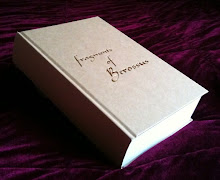Or Googling.
I am Julian Moore and I wrote Fragments of Berossus between ~1997 and 2010, the last five years in Castro Bisztro on Madach Ter in the heart of Budapest.
An epic. A tragedy. A fortune. An Enigma.
Or Googling.
I am Julian Moore and I wrote Fragments of Berossus between ~1997 and 2010, the last five years in Castro Bisztro on Madach Ter in the heart of Budapest.
 |
| Codex Laud, folio VIII at FAMSI |
 In the Betelgeuse star-myth an aged storyteller reads from a quipu. Quipu were Inca record keeping devices consisting of knotted, coloured strings; they were known to be used for recording numerical information but, since they were also used in communicating histories, may also have contained text. Unfortunately, we no longer know how to read them, and the few quipu that survived deliberate suppression and destruction by the Spanish remain largely undeciphered — though scholars such as Gary Urton have made some progress in recent years. (Click Read more for a larger image)
In the Betelgeuse star-myth an aged storyteller reads from a quipu. Quipu were Inca record keeping devices consisting of knotted, coloured strings; they were known to be used for recording numerical information but, since they were also used in communicating histories, may also have contained text. Unfortunately, we no longer know how to read them, and the few quipu that survived deliberate suppression and destruction by the Spanish remain largely undeciphered — though scholars such as Gary Urton have made some progress in recent years. (Click Read more for a larger image)+adjusted+for+blog.jpg)